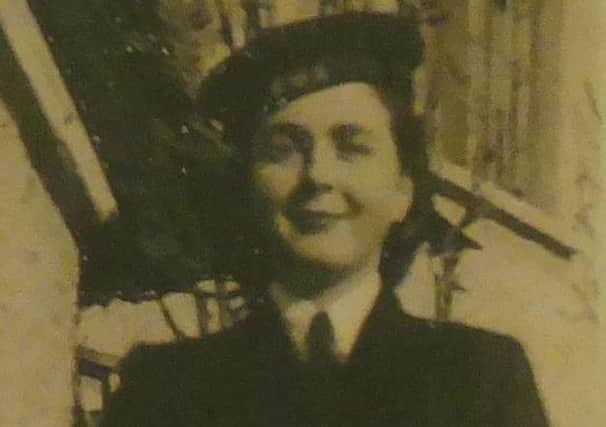Obituary: Lady Pamela Biggs-Davison, Bletchley Park codebreaker, Leading Wren and opera singer


Pamela Biggs-Davison was one of the unsung heroes ofthe Second World War, who worked behind the scenes helping to shorten the war and minimise casualties by cracking German and Japanese cyphers at Bletchley Park. However, because of The Official Secrets Act, her family knew nothing of the vital work she did for over half a century. She later became a stalwart of support to her husband Sir John, a Conservative MP for over 30 years and a leading supporter of Northern Ireland’s union with Great Britain.
Born in Chelsea, London, in 1924, Pamela Mary Hodder-Williams was the daughter and eldest child of four to Ralph, her father and the chairman of Hodder and Stoughton, the publishers, and her mother, Marjorie, one of the first women to attend the University of Toronto in Canada.
Advertisement
Hide AdAdvertisement
Hide AdPamela’s father had been lucky as he had ‘only’ been wounded but survived the bloody First World War battle of Passchendaele near Ypres in Belgium, in 1917, where over 550,000 men from both sides were killed or wounded. He received the MC.
Before the outbreak of the Second World War, the family moved to Duddings, a manor house near Exmoor where they were relatively closeted from the war and the horrors of the Blitz, although Pamela recalled seeing the odd Luftwaffe aircraft, and once having to evade one as it swooped down spraying bullets where she was playing. She jumped into a nearby river and hid under a bridge.
Growing up with her siblings, she enjoyed riding and music, in particular singing, and spent many hours in the company of Lady Munnings, wife of Sir Alfred, the fashionable equine artist, who lived close by. While visiting friends in Somerset in 1941, Admiral Sir Andrew Cunningham, then Commander-in-Chief, Mediterranean Fleet, and later Admiral of the Fleet, suggested that Pamela apply to join the Women’s Royal Naval Service, also known as the Wrens. She agreed and he made the arrangements. Following interview and a medical at Exeter, she was accepted, aged 17.
Soon she found herself working at Gayhurst Court, an Elizabethan country house in Buckinghamshire, in what was an outstation for Bletchley Park’s decoding activities. For two years she was one of the girls of C Watch, the codebreakers for the famous German Enigma machine, before being promoted to Leading Wren and posted to Bletchley Park itself.
Following a visit to Bletchley Park the then Prime Minister Winston Churchill dubbed the code-breakers “the geese who laid the golden eggs for him”, giving him the ammunition to fight the enemy effectively.
Each night the young workers would first have to break the Nazis’ red code. The race was then on to decipher the yellow and green codes. At the stroke of midnight each night, the battle to crack the red code recommenced, as the Germans switched their messaging system daily in an attempt to foil British intelligence.
The work required huge concentration, and the girls were constantly reminded that any mistakes made could cost lives, and mind-set was that as it was part of the war effort, questions were never asked. She recalled, “We did eight-hour shifts, got awful food and were always covered in oil from the machines!”
Following promotion, she moved to Hut 7 at Bletchley to work on deciphering Japanese naval codes, operating the primitive computers, the so-called ‘bombes’, electro-mechanical devices used by the cryptologists to help decode messages from Japanese Enigma variants.
Advertisement
Hide AdAdvertisement
Hide AdWhen not working, her cover story at Bletchley was that she was a radio engineer, though after the war ended she told everyone that she had driven trucks. On free weekends she would hitch rides, against orders, to stay with her grandmother in Kent. She once found herself in an American open-top army truck with beer-swigging soldiers who were “impressed by her poise and beauty”.
Due to the nature of her work, her parents knew nothing of her secret life and her husband knew very little as he died before the Official Secrets Act allowed some of the information to become public knowledge.
After being demobbed, she trained to become a professional opera singer and was said to have an impressive coloratura soprano voice. However, she shelved her plans and married John Biggs-Davison at the Brompton Oratory, London, in 1948. He had reportedly fallen in love with her after seeing her photograph on the grand piano at the Delhi house of her sister and brother-in-law, Anne and George Wyndham.
He had political ambition and, in 1955, was elected Conservative MP for Ongar and Chigwell (later Epping Forest). Pamela’s patience, goodwill and sparkling personality shone through as she supported him unwaveringly, participating in many constituency activities, raised their family of six, while also becoming the commissioner of the local Girl Guides.
Following the death of her husband in 1988, she moved to Somerset where she continued her love of the outdoors and was involved in the Pony Club. She also became the housekeeper to Father Norbury, the Catholic parish priest in Minehead; although brought up an Anglican, she had converted to Catholicism during the war.
In 2014, she received a medal from The Government Code and Cypher School, together with a certificate signed by Prime Minister David Cameron.
She is survived by two sons and four daughters.
Martin Childs